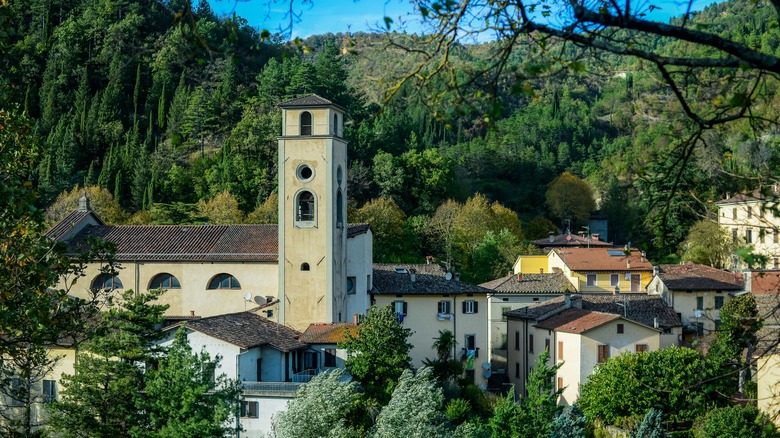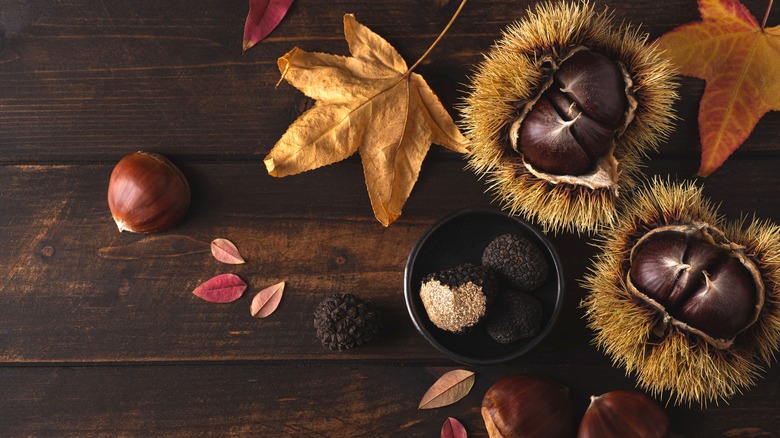Situated Between Florence And Bologna Is Italy's Hidden Village With Truffle Trails And Chestnut Fairs
"Under the Tuscan Sun" may have introduced the world to the romantic ideal of rural Italy, but nestled in the less-trodden folds of the Apennines lies a place that brings that dream to life in a quieter, more intimate way: Marradi. Located about halfway between Florence and Bologna – an underrated Italian city boasting some of the world's best pasta – this quaint mountain village of just under 3,000 residents feels like a well-kept secret in the heart of one of Italy's most visited regions.
While it might not attract the crowds of Pisa, one of Italy's most overrated tourist traps, or feature any golden beaches, Marradi has everything you might expect from a Tuscan escape. Think simple, seasonal food, flavorful wild truffles, generous glasses of local wine, and a picturesque river running through the town. Beyond the town, the landscape unfolds in rolling hills and dense oak and chestnut forests, yielding prized IGP Marron Buono and offering countless trails for hiking and biking. Totaling over 350 miles, many of these paths wind deep into the Foreste Casentinesi National Park, one of the most expansive and ecologically rich parks in Europe.
Even getting there is an experience in itself. The Marradi train station lies on the scenic Faentina railway line connecting Tuscany and Emilia-Romagna while the SR302 road winds through chestnut woods and river valleys, linking the village to Florence and Forlì, not far from the Adriatic Riviera (both about a 1-hour drive), as well as the ancient city of Faenza, known for its stunning ceramics (about 50 minutes).
Marradi, a village steeped in history
Exploring Marradi is also an opportunity to uncover the layered history of a place that has been inhabited for over two millennia, thanks to its strategic position along ancient trade routes. The town has experienced varied fortunes over the centuries, from its Ligurian origins to conquest by the Etruscans and Gauls, before becoming an important Roman stopover, a feudal holding tied to Vallombrosian monasteries, and later ruled by local noble families.
In 1428, Florence took control of the territory, bringing it into the orbit of the Tuscan capital – a legacy still evident in the many sumptuous buildings lining the city center. Modern connections arrived with the Florence-Faenza railway at the end of the 19th century, making the area more accessible and opening it up to trade and tourism. While a 1919 earthquake and WWI bombings damaged much of the historic core, what remains shouldn't be missed, like the neoclassical Church of San Lorenzo, and the opulent Teatro degli Animosi, praised by a visitor as "a little gem in the heart of Tuscan Romagna." There's also the Florentine Renaissance Palazzo Comunale overlooking Piazza Le Scalelle and the Benedictine monastery of Badia di Santa Reparata (or Badia del Borgo), established in the early 11th century.
Marradi also gave birth to one of Italy's most enigmatic and controversial poets, Dino Campana, whose dreamlike verses — collected in his seminal work, the "Orphic Songs" – drew inspiration from the wild landscapes of his native land. His legacy lives on at the Centro Studi Campaniani "Enrico Consolini" and the Museo "Artisti per Dino Campana," open Tuesday and Friday from 5 p.m. to 8 p.m., and in July and August also on Thursdays from 9 p.m. to 11 p.m.
The culinary delights of Marradi
Food and wine are a big part of Marradi's identity; after all, Tuscany is unanimously considered the absolute best destination in Italy for wine lovers, and a favorite playground for foodies too. Come fall (roughly late September to late November), the town's true star takes center stage — Marron Buono chestnuts, at the height of their rich, sweet glory. For over 60 years, this bounty has been celebrated with a widely attended Chestnut Festival taking place each Sunday throughout October, featuring live music, street performances, and lots of local delicacies.
Must-tries include castagnaccio (a rustic cake featuring a unique blend of chestnut flour, soft raisins, aromatic rosemary leaves, and crunchy pine nuts) and necci (fluffy chestnut flour crepes, typically stuffed with fresh ricotta and local honey, or a more indulgent chocolate filling). The town's surrounding woodlands are also rich in prized white and black truffles, showcased in earthy dishes like tagliatelle al tartufo nero (fresh egg pasta with black truffle shavings) and tortellini al tartufo (stuffed pasta), alongside succulent porcini mushrooms, commonly used in creamy risottos, pasta dishes, and sautéed sides.
Ristorante Il Casolare, open Tuesday to Sunday, serves the best of the Tosco-Emilian tradition in a cozy, rustic ambiance, complemented by an impressive selection of wines from the nearby Tuscan hills as well as from across the Italian peninsula. The Gelateria Caffè Centrale in via Talenti is the perfect place to start the day on the right foot. Think creamy cappuccinos paired with scrumptious homemade cakes — and the selection of artisanal ice creams is just as worth the stop.


